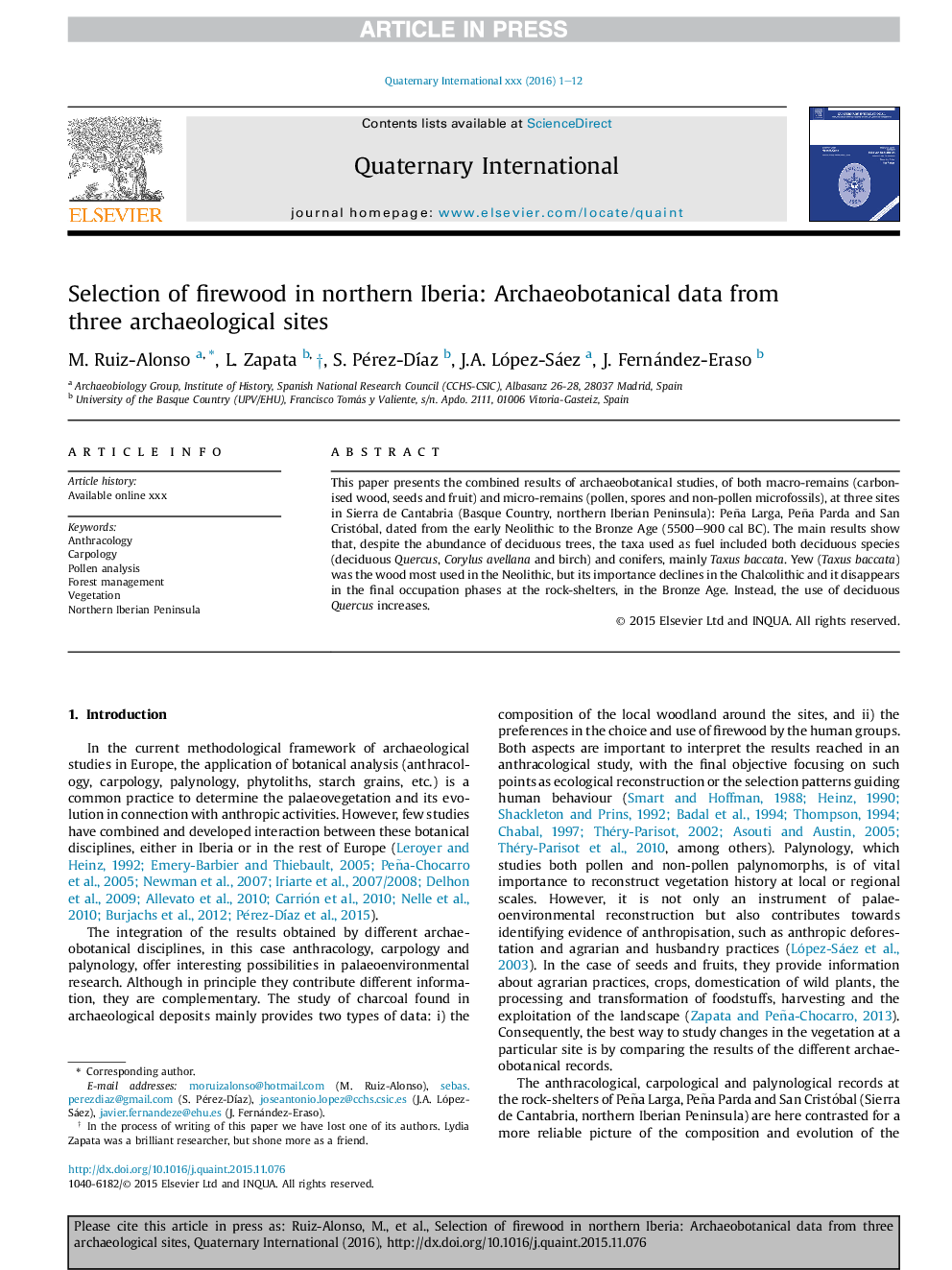| Article ID | Journal | Published Year | Pages | File Type |
|---|---|---|---|---|
| 5113822 | Quaternary International | 2017 | 12 Pages |
Abstract
This paper presents the combined results of archaeobotanical studies, of both macro-remains (carbonised wood, seeds and fruit) and micro-remains (pollen, spores and non-pollen microfossils), at three sites in Sierra de Cantabria (Basque Country, northern Iberian Peninsula): Peña Larga, Peña Parda and San Cristóbal, dated from the early Neolithic to the Bronze Age (5500-900Â cal BC). The main results show that, despite the abundance of deciduous trees, the taxa used as fuel included both deciduous species (deciduous Quercus, Corylus avellana and birch) and conifers, mainly Taxus baccata. Yew (Taxus baccata) was the wood most used in the Neolithic, but its importance declines in the Chalcolithic and it disappears in the final occupation phases at the rock-shelters, in the Bronze Age. Instead, the use of deciduous Quercus increases.
Related Topics
Physical Sciences and Engineering
Earth and Planetary Sciences
Geology
Authors
M. Ruiz-Alonso, L. Zapata, S. Pérez-DÃaz, J.A. López-Sáez, J. Fernández-Eraso,
